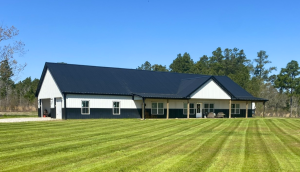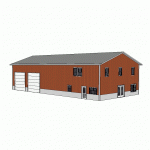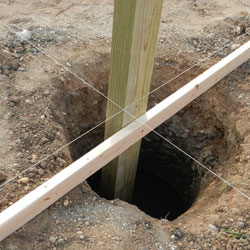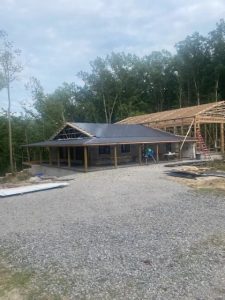With many barndominiums being multi-storied, or at least having lofts or mezzanines, there are several methods of structural support. These would include dimensional lumber, wood trusses and I-joists.
In our own post frame barndominium, we utilized I-joists as rafters for both side sheds. They are also floor joists for my lovely bride’s mezzanine sewing loft – a partial third floor above our master bedroom.
When I began my prefabricated metal connector plated wood truss career back in 1977, one of my first jobs was cutting webs for wood floor trusses. Then, wood floor trusses were a fairly new concept, they allowed for much longer clearspans than dimensional lumber, were consistent in size and made for very fast framing.
Floor trusses were (and are) in direct competition with I-joists. I-joists were invented in 1969 and are engineered wood products used for both floors and roofs. They have a great deal of strength in relationship to size and weight.
I-joists require correct installation – meaning a requirement for more experience and training than a dimensional lumber framed floor. Most common mistake is misplacing or improperly sizing holes in OSB (Oriented Strand Board) webs. This can compromise I-joist strength, potentially leading to structural failure. Other common installation mistakes include cutting or chiseling flanges, improperly size joist hangers, improper nailing and wrong sized nails. Rim joists much also match I-joist size as mismatches can strain joists. When an I-joist crosses a main beam, squash blocks must be installed alongside I-joists to transfer loads from I-joist to beam. Missed nails and glue setting too fast can lead to an uneven or squeaky floor. Field modification or repairs usually require manufacturer’s consultation.
 I-joists need to be drilled for mechanical installations (e.g. HVAC, electrical, plumbing, etc.) leading to lost-time and effort as compared to open web floor trusses. in order to meet IRC (International Residential Code), I-joists must be covered on both sides of their full solid web with fire resistive chemicals or cladding. I-joists often do not perform well when exposed to fire or water. Thin I-joist webs can be relatively easily damaged or burned through by fire. OSB I-joist webs can be swelled by excessive moisture absorption causing web weakening. Top and bottom flanges (usually 2×4) can exhibit cupping, warping or splitting from excessive swelling due to moisture absorption.
I-joists need to be drilled for mechanical installations (e.g. HVAC, electrical, plumbing, etc.) leading to lost-time and effort as compared to open web floor trusses. in order to meet IRC (International Residential Code), I-joists must be covered on both sides of their full solid web with fire resistive chemicals or cladding. I-joists often do not perform well when exposed to fire or water. Thin I-joist webs can be relatively easily damaged or burned through by fire. OSB I-joist webs can be swelled by excessive moisture absorption causing web weakening. Top and bottom flanges (usually 2×4) can exhibit cupping, warping or splitting from excessive swelling due to moisture absorption.
For vibration control, both web stiffeners and blockings can be necessary to obtain desired floor stiffness.
Floor trusses have a distinct advantage for being mechanical equipment friendly. With the ability to design chase openings for ductwork through them, this is a big advantage. But let’s say there is a job site change and the truss company was not informed (never happens right?) and the ductwork must be shifted. Openings in webbing will allow for this adjustment to happen seamlessly. With this type of flexibility, who wouldn’t want floor trusses?
With I –Joists, holes you can actually cut into each joist can be pretty small. These holes also must follow certain parameters. Sometimes this is very limiting and you must stay within certain locations to place holes. Let’s not forget if you cut into a flange, a big no-no, you’re going to need a new joist.
Floor trusses can clear-span with the same floor ratings much further than any I-Joist product. This is very beneficial to frugal barndominium builders and owners out there. Let’s face it though; aren’t we all trying to be more frugal with everything we do? Who wants to put in an extra steel beam and posts or 3-4ply LVL to carry some “I’s” those extra 3’ or 4’ because their span rating is good for distance required? Those beams could add up to several hundred (even thousands) of dollars.
I-Joists may need an increased depth or decreased spacing to span very same distances, using very same design criteria. Bridging and blocking can be increased to “shore” up a floor, but this runs a risk of them being omitted.
In my mind, floor trusses are a winning answer. Are they for you?









